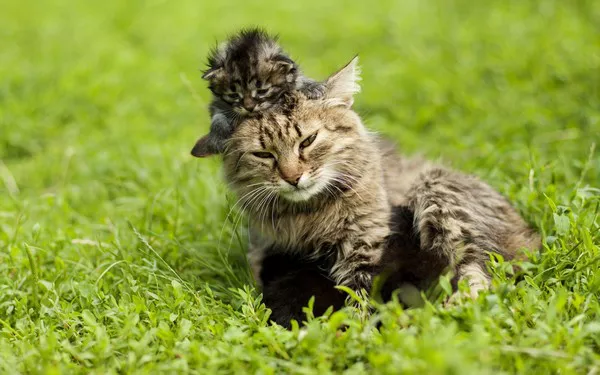Leaving pets alone for an extended period can be a daunting prospect for any cat owner. While cats are often more independent than dogs, they still require adequate care and attention to ensure their health and happiness. When considering leaving two cats alone for a week, it’s vital to assess the situation thoroughly, ensuring that both felines are safe, comfortable, and cared for during your absence. This article provides a comprehensive guide on how to prepare for such a scenario, addressing the key aspects of safety, comfort, social interaction, and emergency planning, with an emphasis on the importance of considering cat boarding options when necessary.
1. Assessing the Situation
Before making any decisions, it’s essential to assess the specific needs and personalities of your cats. This evaluation will help you determine whether they can handle being left alone for a week and what preparations are necessary.
Cat Personalities
The temperament and personality of each cat play a significant role in how they will cope with being alone. Consider the following aspects:
Independence Level: Some cats are naturally more independent and may adapt well to being alone. Others, especially those that thrive on human interaction, may become anxious or stressed without companionship.
Social Dynamics: Observe how your cats interact with each other. If they have a strong bond, they may find comfort in each other’s presence. Conversely, if they have a history of conflict or if one is significantly more dominant than the other, it could lead to stress during your absence.
Adaptability: Consider how well each cat adapts to changes in their routine. Cats that are easily stressed may not cope well with being left alone for an extended period.
Health and Age
The health and age of your cats are crucial factors in your decision-making process.
Kittens: Young cats require more attention, socialization, and playtime. They are also less able to handle changes in their routine and may become bored or anxious when left alone.
Elderly Cats: Older cats may have health issues or mobility challenges that necessitate regular monitoring and care. If your cat is senior, consider how they will manage alone without your presence.
Health Conditions: If either cat has pre-existing health issues, they may require regular medication, special diets, or closer monitoring, making it essential to have a caregiver in place.
2. Safety and Comfort
Once you’ve assessed your cats’ personalities and health needs, you can begin preparing their environment to ensure safety and comfort during your absence.
Food and Water
Providing an adequate supply of food and water is paramount. Here are some tips:
Automatic Feeders: Investing in automatic feeders can help dispense the right amount of food at designated times. This ensures that your cats receive their meals consistently, even if you are not home.
Water Dispensers: A water fountain or an automatic water dispenser can provide a continuous supply of fresh water. Cats often prefer running water, and a fountain can encourage them to stay hydrated.
Bulk Supplies: Make sure to leave enough food and water for the entire week. It’s wise to estimate a little extra to accommodate any unexpected delays in your return.
Litter Boxes
A clean and comfortable litter area is essential for your cats’ well-being:
Multiple Litter Boxes: Ideally, you should have one litter box per cat, plus one extra. This ensures they have options, reducing potential territorial disputes over the boxes.
Thorough Cleaning: Before leaving, clean the litter boxes thoroughly to minimize odors and ensure they are comfortable for your cats.
Self-Cleaning Litter Boxes: Consider investing in self-cleaning litter boxes if you’re leaving for an extended period. These can help maintain cleanliness and reduce your cats’ stress.
Environment
Creating a safe and cat-friendly environment is vital for your cats’ comfort while you are away:
Remove Hazards: Before leaving, ensure that all potential hazards are removed from the home. Secure loose cables, toxic plants, and any small items that could be ingested.
Safe Spaces: Create designated safe areas where your cats can retreat to if they feel stressed. Providing cozy resting spots or cat beds can help them feel secure.
3. Social Interaction
While cats are known for their independence, they still require social interaction and mental stimulation. Ensuring your cats are entertained and engaged will help alleviate feelings of loneliness or boredom.
Boredom and Loneliness
Leaving two cats alone can lead to boredom and loneliness, potentially resulting in behavioral issues. Here are ways to mitigate these concerns:
Interactive Toys: Provide a variety of toys that promote physical and mental engagement. Puzzle toys or treat-dispensing toys can keep them occupied and mentally stimulated.
Scratching Posts: Ensure there are adequate scratching posts to keep your cats entertained and to prevent them from engaging in destructive behavior.
Comfortable Resting Spots: Create multiple comfortable resting spots where your cats can relax and feel secure.
Pet Sitter
One of the best ways to ensure your cats receive the social interaction they need is by hiring a pet sitter:
Daily Visits: A pet sitter can visit daily to check on your cats, provide food and water, clean litter boxes, and spend time with them, alleviating feelings of loneliness.
Familiar Face: If you choose a trusted friend or neighbor, your cats may feel more at ease with someone they know.
Interactive Care: A pet sitter can engage in playtime and give your cats the attention they need, ensuring they remain happy during your absence.
4. Emergency Plan
In case of emergencies, having a well-prepared plan is crucial for ensuring your cats’ safety and well-being.
Contact Information
Before leaving, gather important contact information:
Local Veterinarian: Compile the contact information for your local veterinarian and their emergency hours.
Emergency Contacts: Provide a list of emergency contacts who can assist if issues arise during your absence.
Clear Instructions
When hiring a pet sitter or asking someone to care for your cats, clear instructions are essential:
Feeding Schedules: Outline the feeding schedule for each cat, including portion sizes and any dietary restrictions.
Medication Needs: If your cats require medication, provide clear instructions on dosage, timing, and how to administer it.
Specific Care Requirements: Include any additional care needs for each cat, such as grooming or special attention to particular behaviors.
5. Monitoring and Updates
Staying informed about your cats’ well-being while you are away can provide peace of mind.
Pet Cameras
Consider setting up pet cameras to monitor your cats remotely:
Real-Time Updates: Many pet cameras offer live streaming, allowing you to check in on your cats and ensure they are safe and comfortable.
Two-Way Audio: Some cameras come equipped with two-way audio, allowing you to communicate with your cats and soothe them if needed.
Regular Check-Ins
Maintain regular communication with your pet sitter to stay updated on your cats’ well-being:
Scheduled Updates: Arrange for your pet sitter to send you regular updates, either through texts or photos, during their visits.
Immediate Concerns: Discuss the importance of promptly notifying you about any concerns or issues that arise.
6. Considering Cat Boarding
While many cat owners feel comfortable leaving their pets at home for a week, some situations may warrant considering cat boarding options.
Advantages of Cat Boarding
Cat boarding facilities can provide a safe, controlled environment where your cats can receive the care and attention they need while you are away. The advantages include:
Supervision: Boarding facilities have trained staff who can monitor your cats, ensuring their health and safety.
Social Interaction: Cats in boarding facilities often have opportunities for socialization with other cats and humans, reducing feelings of loneliness.
Emergency Care: In case of emergencies, boarding facilities typically have veterinarians on call to handle any health concerns promptly.
Choosing the Right Facility
If you decide on boarding, choose a facility that prioritizes the health and well-being of the animals:
Research Facilities: Look for reputable cat boarding facilities with positive reviews from other pet owners.
Visit in Advance: Tour the facility before making a decision to assess cleanliness, staff interaction, and the general environment.
Ask Questions: Inquire about the facility’s policies, including feeding, exercise, and emergency protocols.
Conclusion
Leaving two cats alone for a week requires careful consideration and preparation to ensure their safety and well-being. Assessing their personalities, health needs, and environment will help you create a comfortable living situation during your absence. Providing adequate food, water, litter boxes, and opportunities for social interaction will mitigate feelings of loneliness and boredom. Having a clear emergency plan and considering pet cameras for monitoring can offer peace of mind while you are away. If leaving your cats at home seems challenging, exploring cat boarding options may be a viable alternative to ensure their needs are met in a safe, nurturing environment. Ultimately, with the right preparations, both you and your cats can enjoy your time apart, confident in the knowledge that they are well cared for.
Related Topics


























